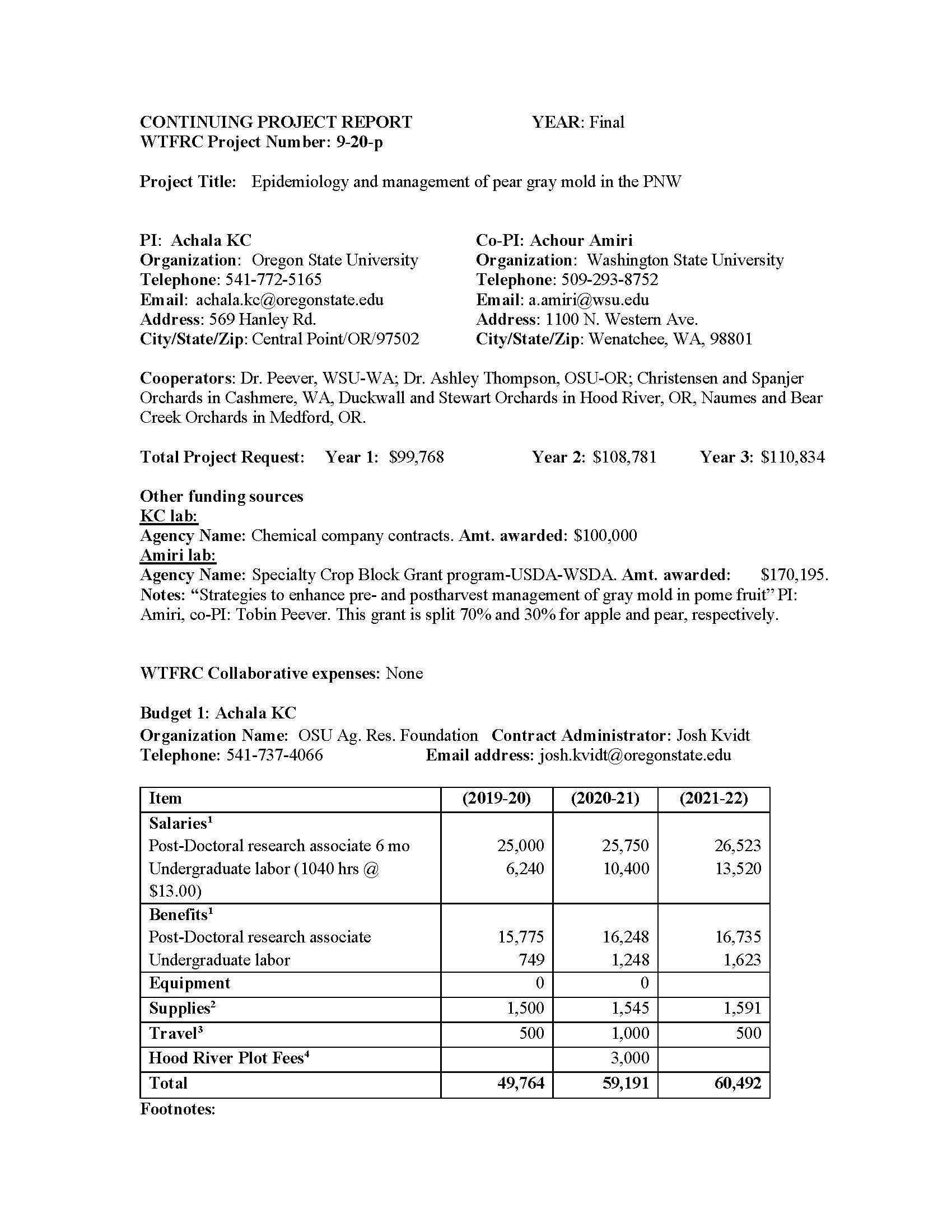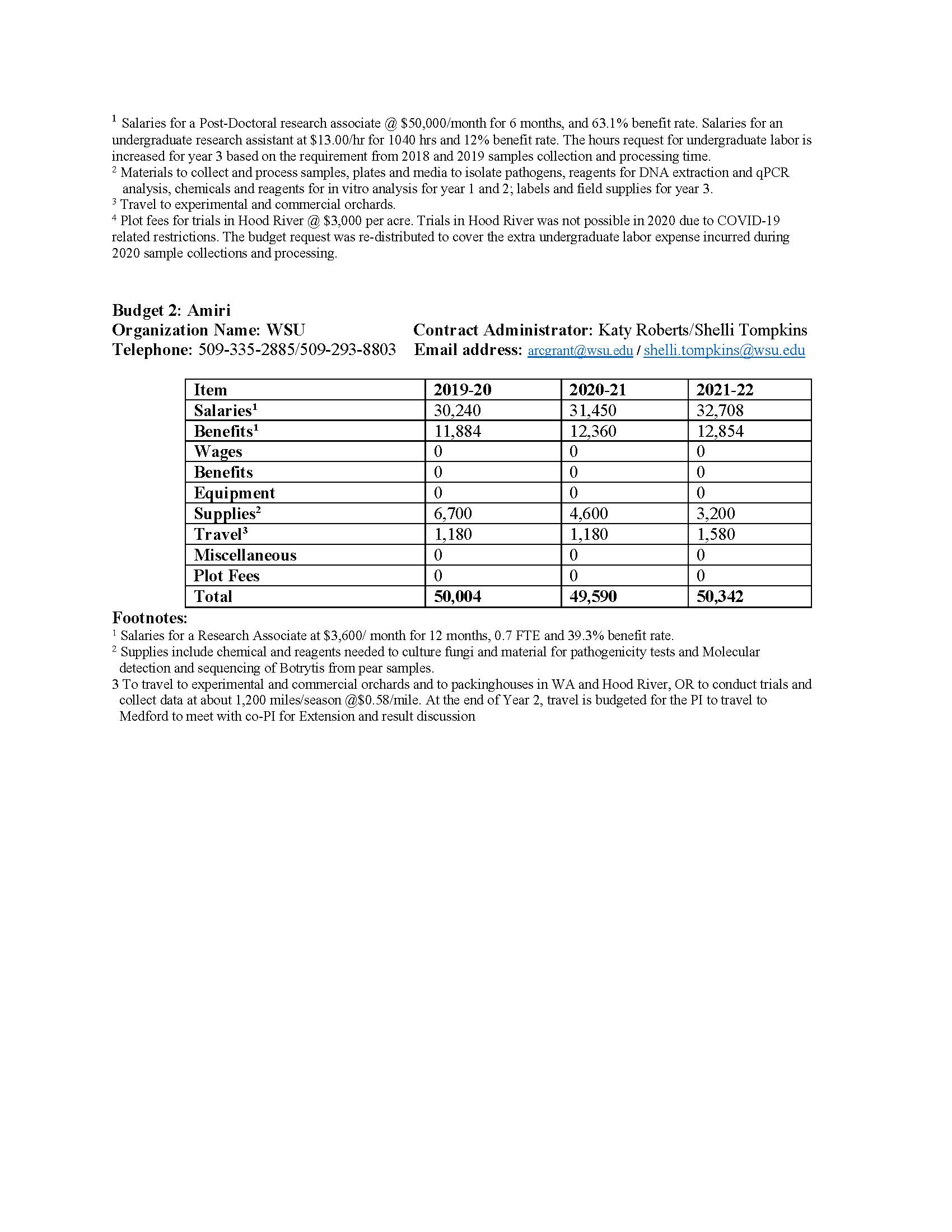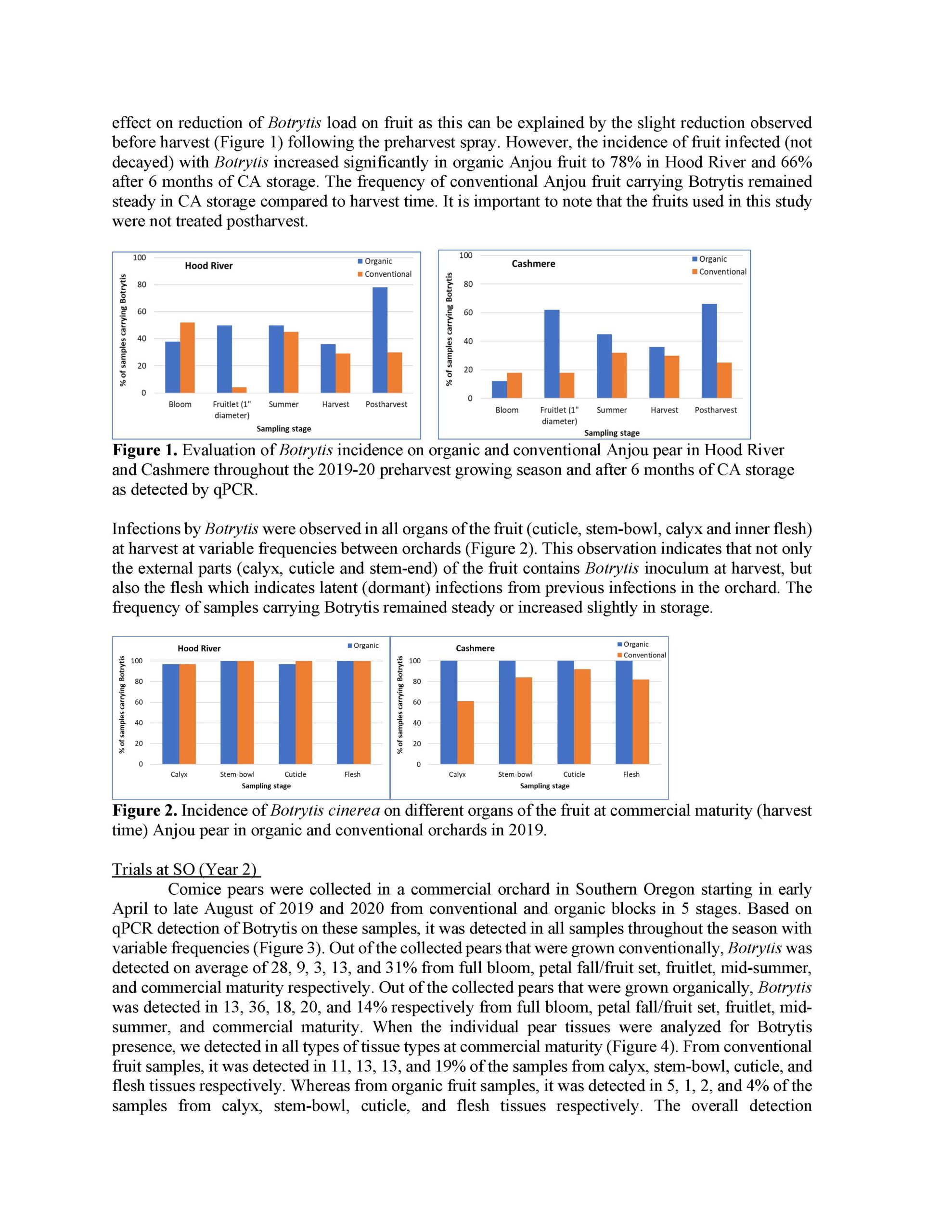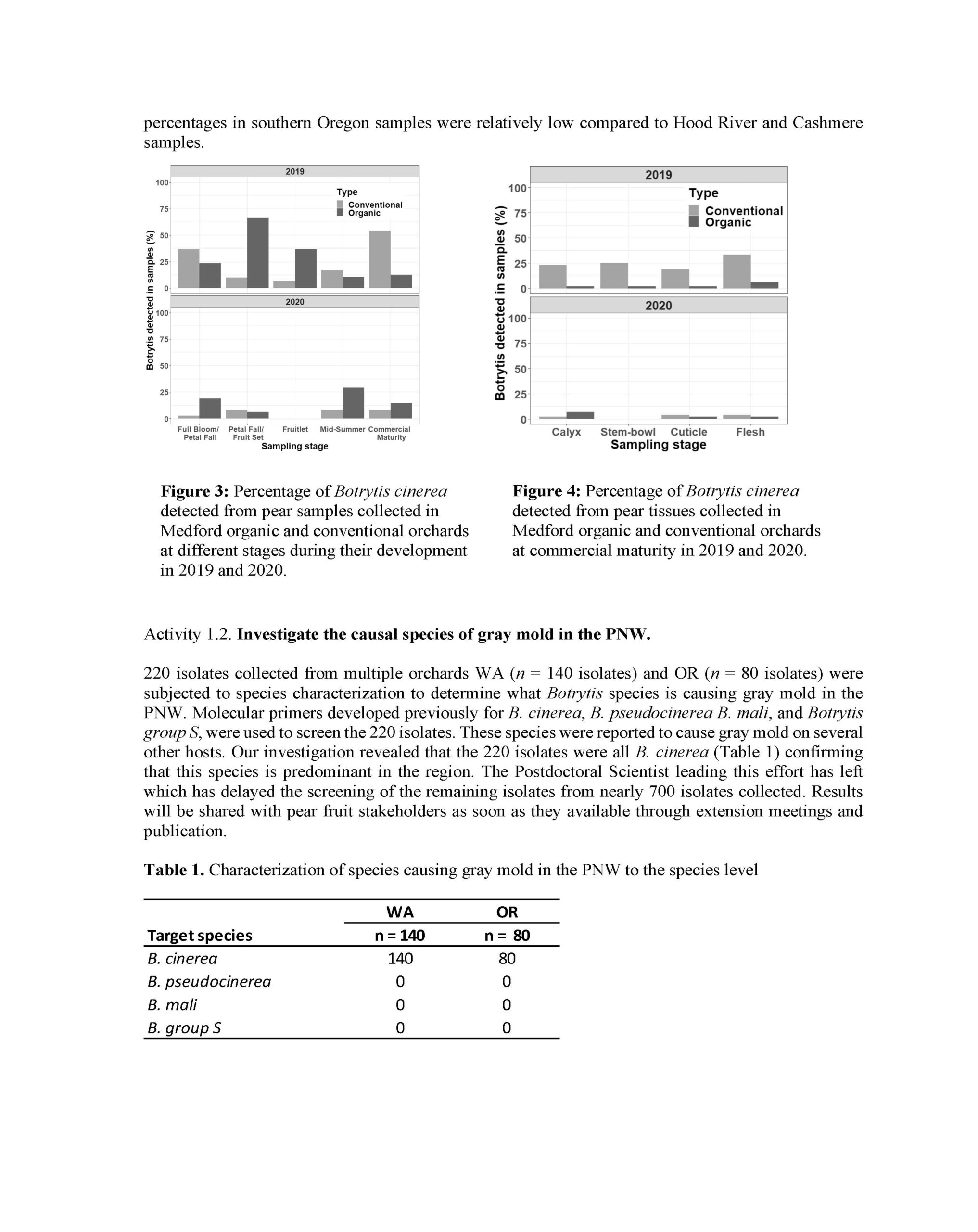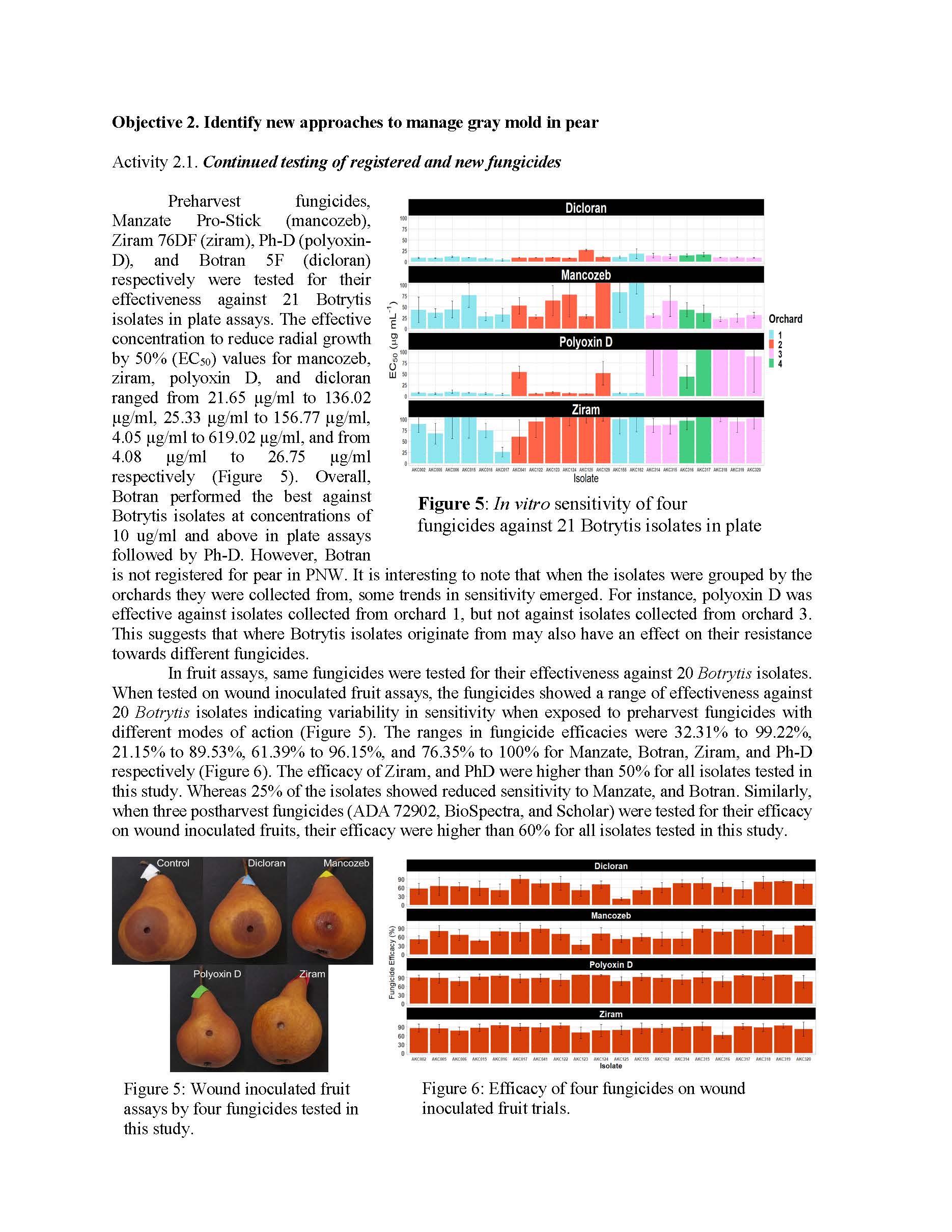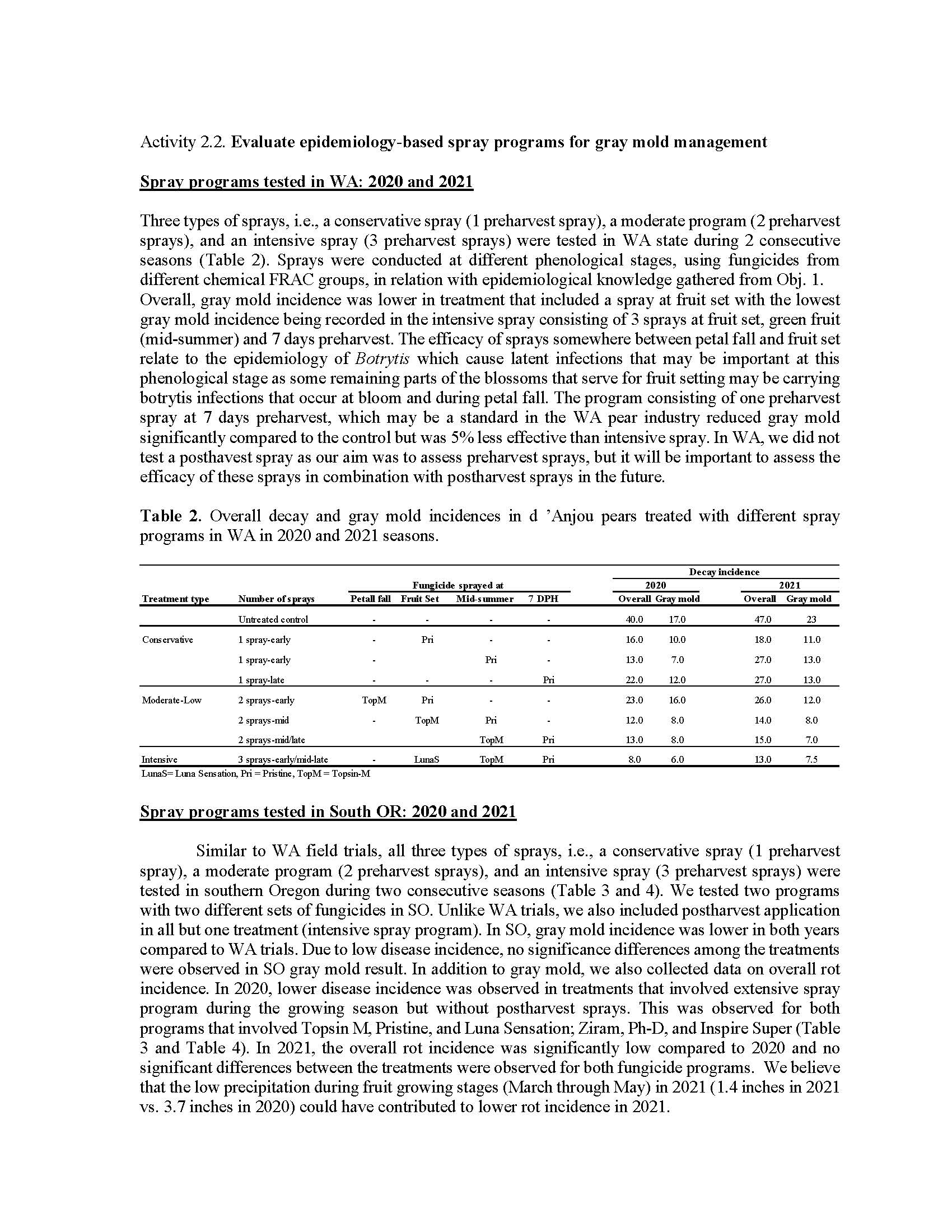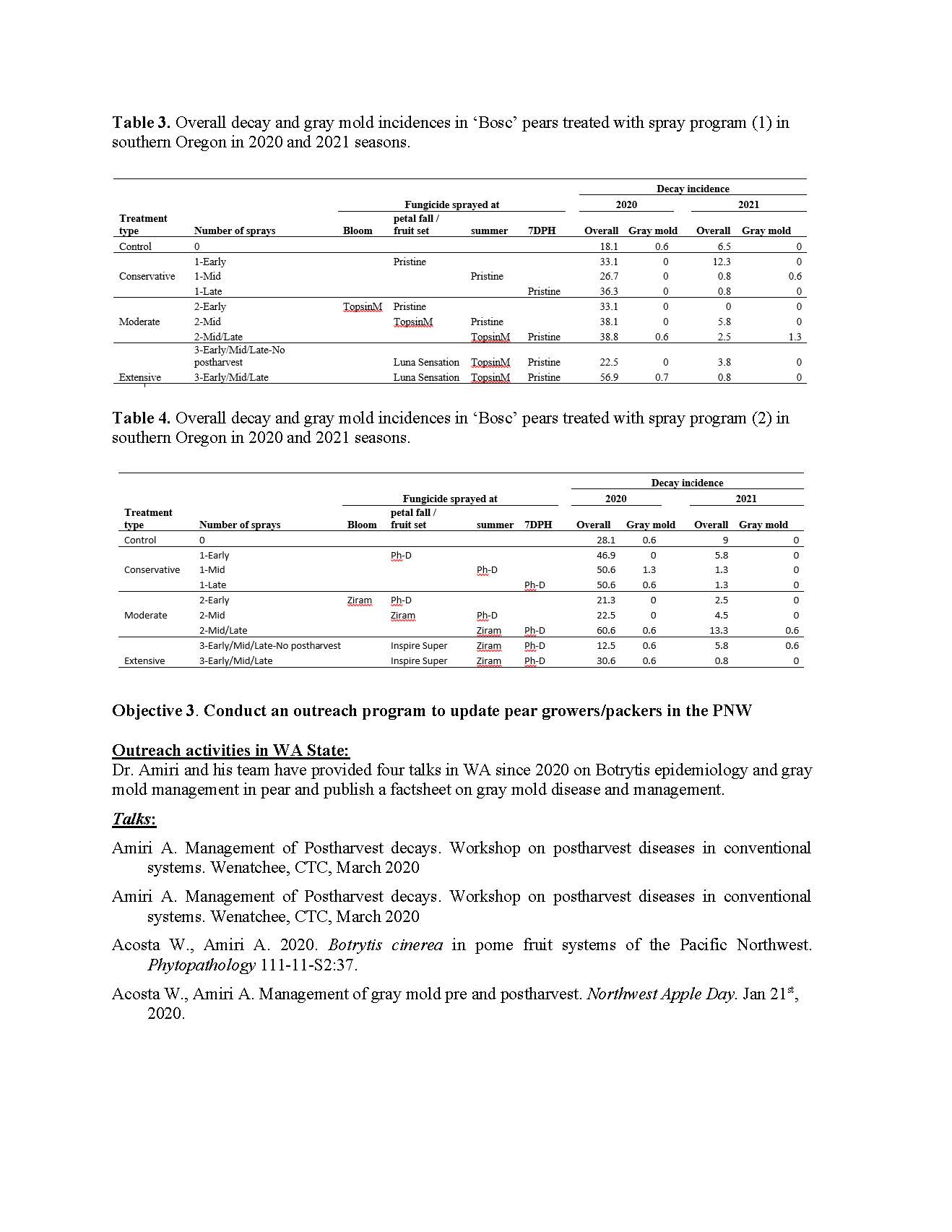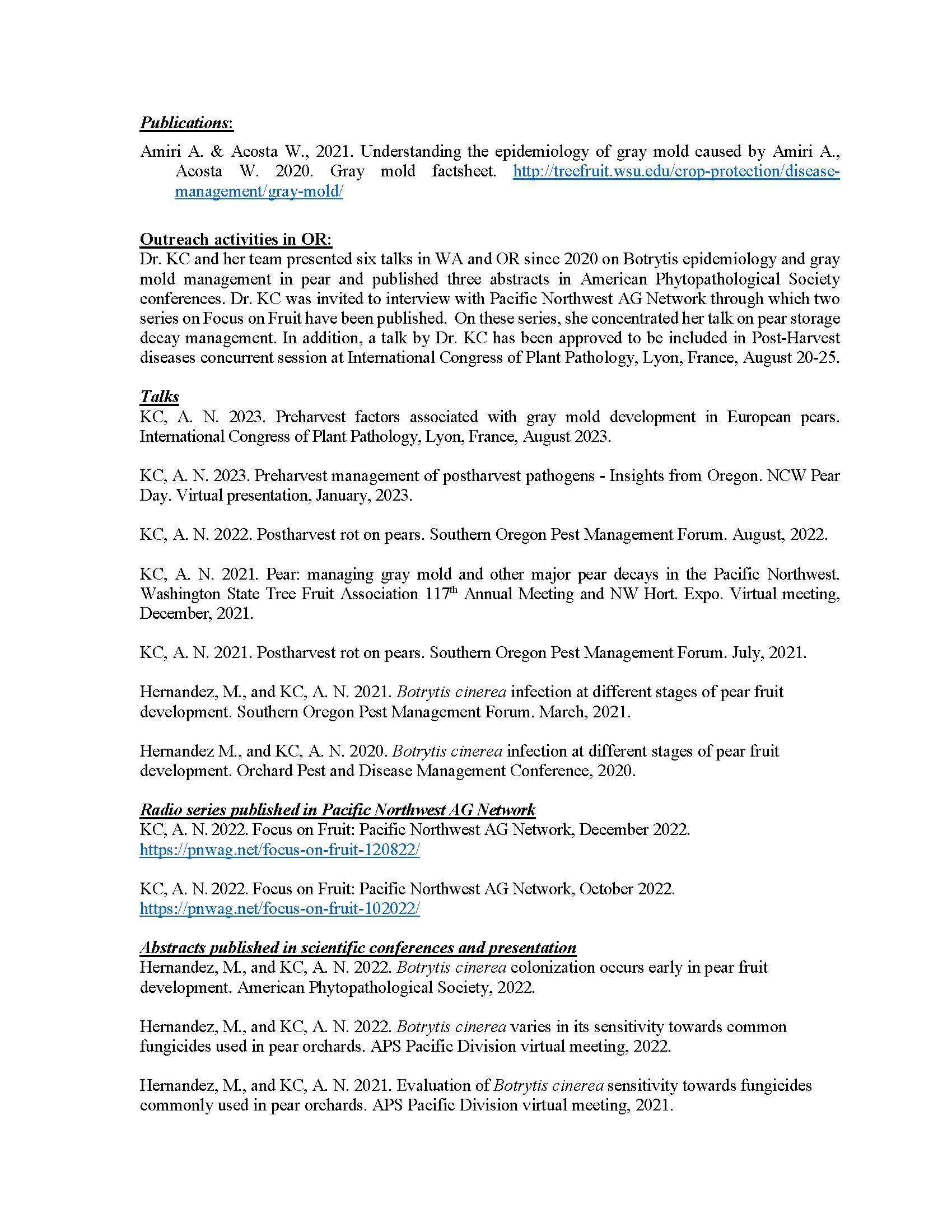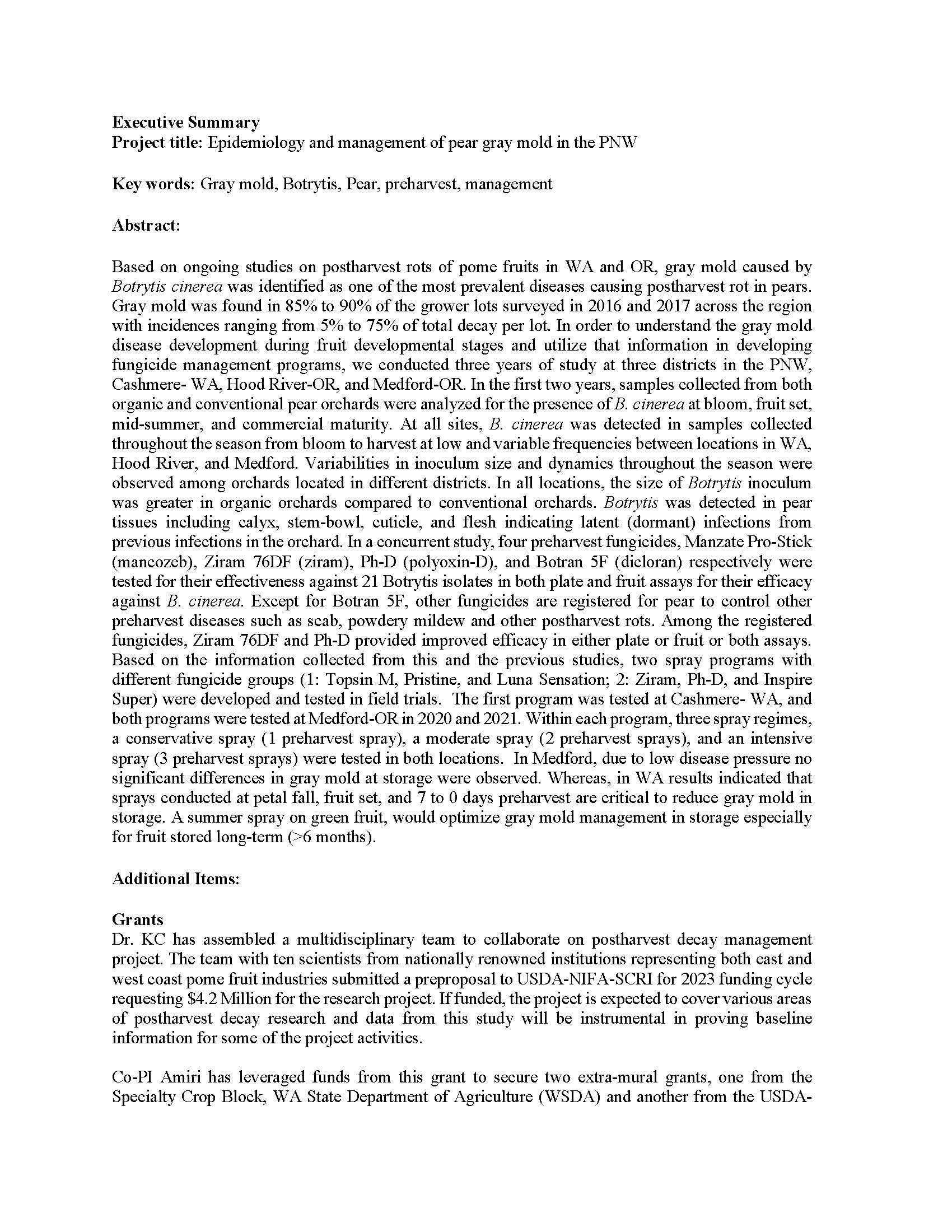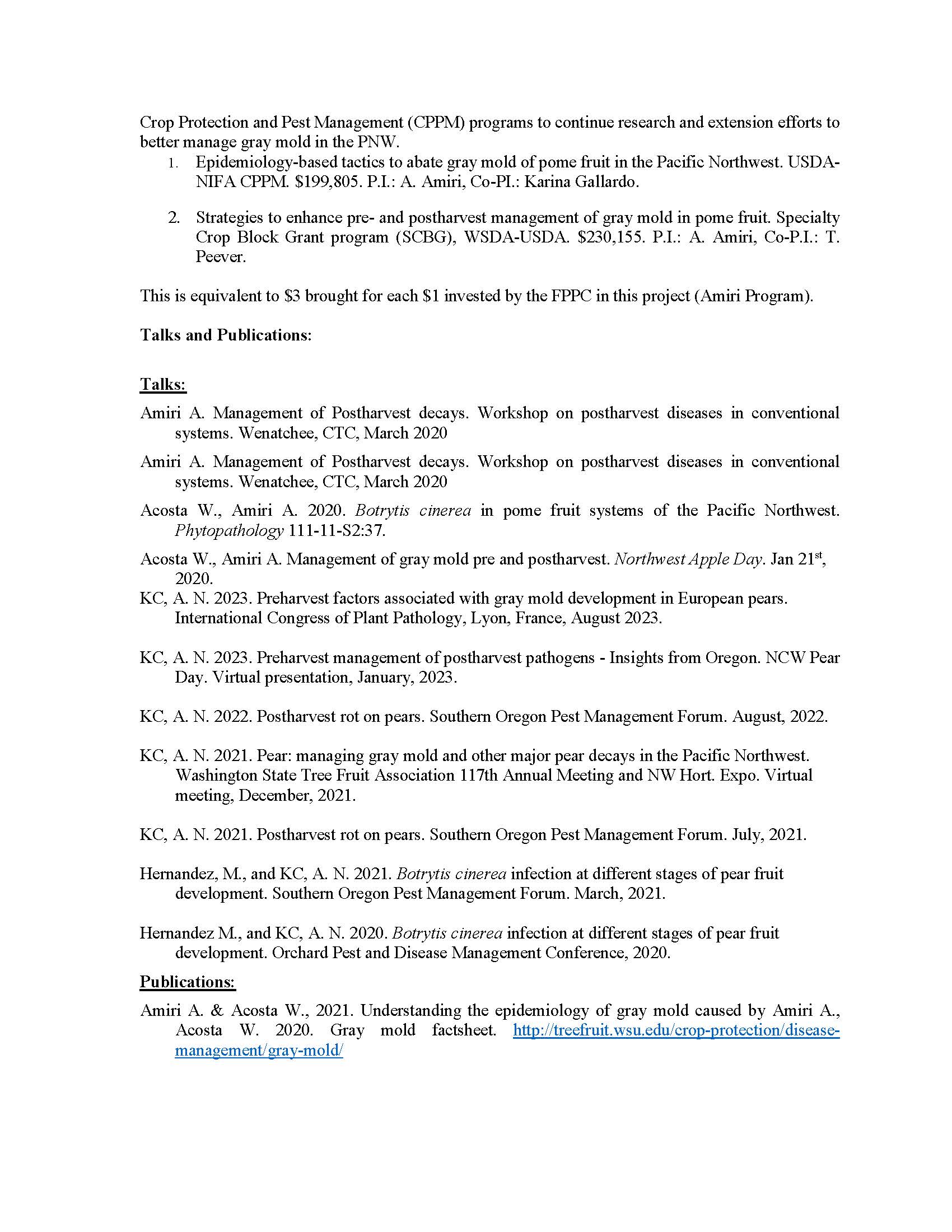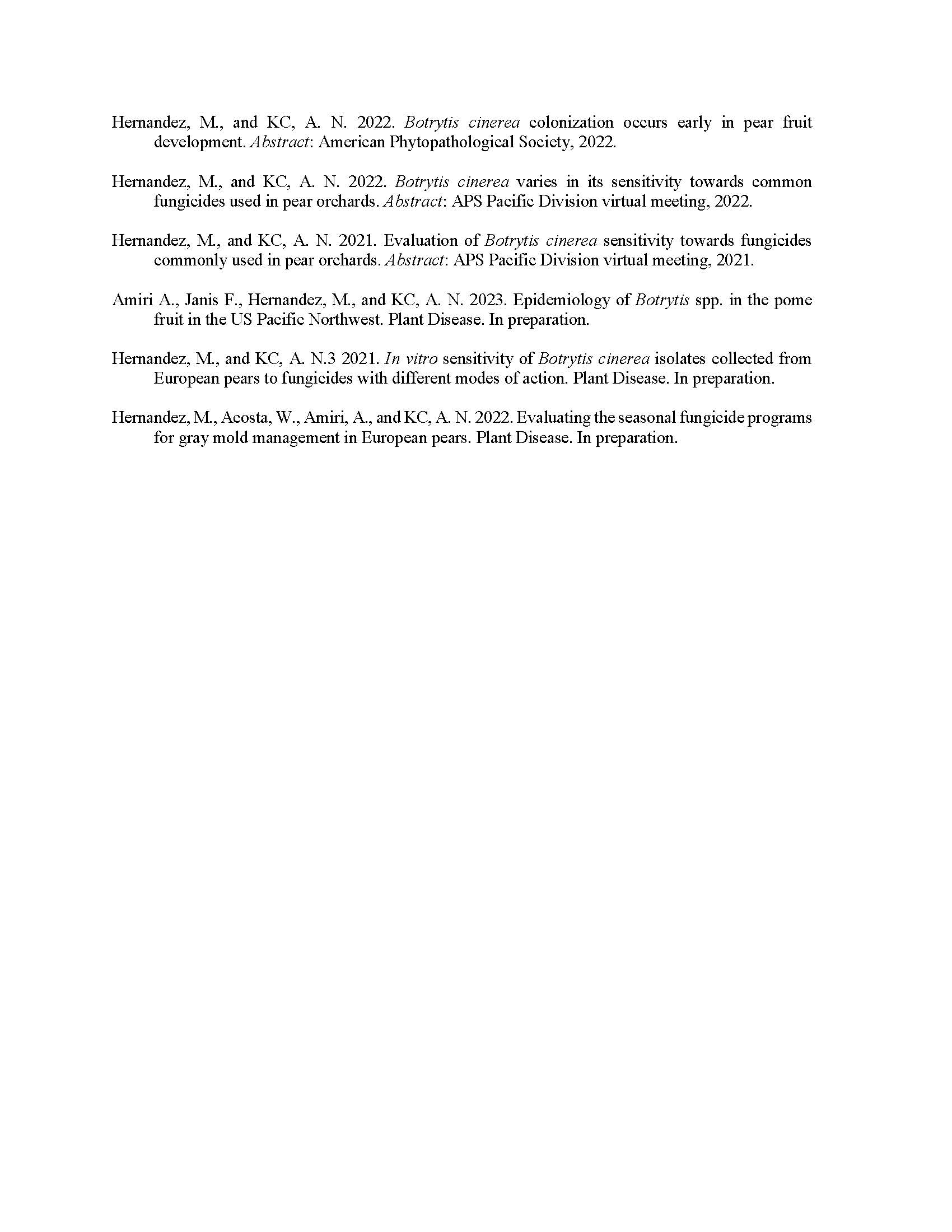Epidemiology and management of pear gray mold in the PNW
Author: Achala KC
Published: 2023
Summary: Based on ongoing studies on postharvest rots of pome fruits in WA and OR, gray mold caused by Botrytis cinerea was identified as one of the most prevalent diseases causing postharvest rot in pears. Gray mold was found in 85% to 90% of the grower lots surveyed in 2016 and 2017 across the region with incidences ranging from 5% to 75% of total decay per lot. In order to understand the gray mold disease development during fruit developmental stages and utilize that information in developing fungicide management programs, we conducted three years of study at three districts in the PNW, Cashmere- WA, Hood River-OR, and Medford-OR. In the first two years, samples collected from both organic and conventional pear orchards were analyzed for the presence of B. cinerea at bloom, fruit set, mid-summer, and commercial maturity. At all sites, B. cinerea was detected in samples collected throughout the season from bloom to harvest at low and variable frequencies between locations in WA, Hood River, and Medford. Variabilities in inoculum size and dynamics throughout the season were observed among orchards located in different districts. In all locations, the size of Botrytis inoculum was greater in organic orchards compared to conventional orchards. Botrytis was detected in pear tissues including calyx, stem-bowl, cuticle, and flesh indicating latent (dormant) infections from previous infections in the orchard. In a concurrent study, four preharvest fungicides, Manzate Pro-Stick (mancozeb), Ziram 76DF (ziram), Ph-D (polyoxin-D), and Botran 5F (dicloran) respectively were tested for their effectiveness against 21 Botrytis isolates in both plate and fruit assays for their efficacy against B. cinerea. Except for Botran 5F, other fungicides are registered for pear to control other preharvest diseases such as scab, powdery mildew and other postharvest rots. Among the registered fungicides, Ziram 76DF and Ph-D provided improved efficacy in either plate or fruit or both assays. Based on the information collected from this and the previous studies, two spray programs with different fungicide groups (1: Topsin M, Pristine, and Luna Sensation; 2: Ziram, Ph-D, and Inspire Super) were developed and tested in field trials. The first program was tested at Cashmere- WA, and both programs were tested at Medford-OR in 2020 and 2021. Within each program, three spray regimes, a conservative spray (1 preharvest spray), a moderate spray (2 preharvest sprays), and an intensive spray (3 preharvest sprays) were tested in both locations. In Medford, due to low disease pressure no significant differences in gray mold at storage were observed. Whereas, in WA results indicated that sprays conducted at petal fall, fruit set, and 7 to 0 days preharvest are critical to reduce gray mold in storage. A summer spray on green fruit, would optimize gray mold management in storage especially for fruit stored long-term (>6 months).
Keywords:

